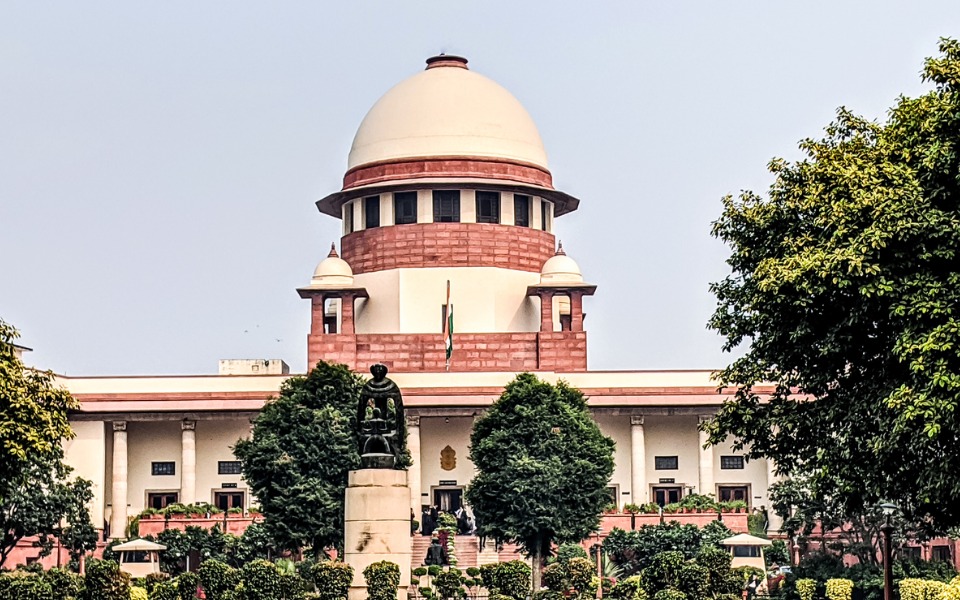
Supreme Court livestreams proceedings four years after deciding to go for it

It took four years for live-streaming of Supreme Court proceedings to become a reality after the court’s Swapnil Tripathi judgment of September 2018 in which it had upheld the plea for live-streaming of its proceedings.
Today, on September 27, 2022, three Constitution Bench proceedings in the apex court were beamed live through YouTube. The separate benches were led by Chief Justice U U Lalit, Justices D Y Chandrachud and Sanjay Kishan Kaul, respectively.
Chief Justice Lalit heard the Economically Weaker Section (EWS) quota case which challenges the 103rd Constitution Amendment; Justice Chandrachud heard the petition regarding the rift in Shiv Sena between Eknath Shinde and Uddhav Thackeray factions; and, Justice Kaul heard the matter relating to the validity of the All-India Bar Examination.
The live streaming was deferred for 30 seconds as per the normal procedure.
Also read: Supreme Court grants bail to Kerala journalist Siddique Kappan
Expanding the court
In its 2018 judgement, the court had said that live-streaming would ‘virtually’ expand the court beyond four walls and “has the potential of throwing up an option to the public to witness live court proceedings which they otherwise could not have due to logistical issues and infrastructural restrictions.”
Justice Chandrachud, who was on the Bench, had observed that live-streaming of proceedings would be the true realisation of the “open court system” in which courts were accessible to all.
The Supreme Court had declared that live telecast of court proceedings was part of the right to access justice under Article 21 of the Indian Constitution. Article 21 deals with the protection of life and personal liberty of individuals by stating, “No person shall be deprived of his life or personal liberty except according to procedure established by law”.
But the judgment awaited implementation for years until the pandemic struck and the court had to embrace technology. Videoconferencing was introduced and the online system was perfected over two years of COVID-19.
Indira Jaising’s letter triggers the process
Recently, a letter from senior advocate Indira Jaising to Chief Justice Lalit reminded him about the live-streaming judgment. Following it, a full court met on September 20 and agreed to beam Constitution Bench proceedings live.
As per media reports, the National Informatics Centre (NIC), which is handling the project, tested the new system on Sunday and Monday and the results were found to be satisfactory.
On August 26, proceedings before the ceremonial bench on the date of retirement of former Chief Justice of India (CJI) N V Ramana were also livestreamed.
SC’s own platform soon
On Monday, Chief Justice Lalit brushed aside apprehensions raised by former BJP leader K N Govindacharya, through a writ petition, about the Supreme Court using YouTube as a medium for its webcast. “These are the initial stages. We will certainly have our own dedicated platforms,” the Chief Justice said.
The CJI, heading a three-judge bench, had on Monday morning told a lawyer that the SC will have its own platform for livestreaming soon.
Also read: BCCI is a ‘shop’, provisions of ESI Act applicable: Supreme Court
People can access the proceedings on their cell phones, laptops, and computers at webcast.gov.in/scindia/.
The trailblazers
While the SC is adopting the live-streaming of court cases now, the high courts of Gujarat, Orissa, Karnataka, Jharkhand, Patna and Madhya Pradesh have been holding live-streaming of the proceedings through their own YouTube channels, from as early as 2020.
India joins the list of countries such as the UK, South Africa, Canada, Australia, New Zealand, Brazil, Germany, and China where live-streaming of court cases is permitted.
(With Agency inputs)

